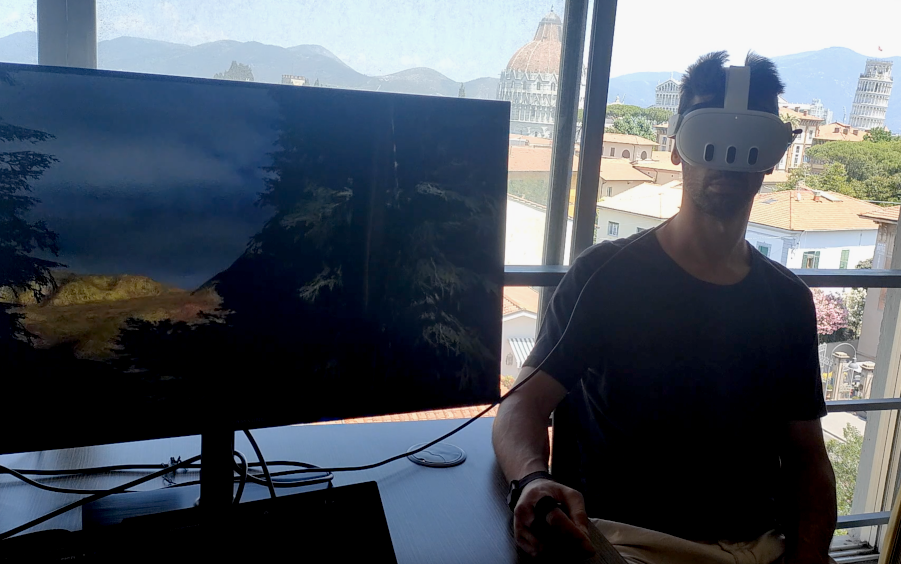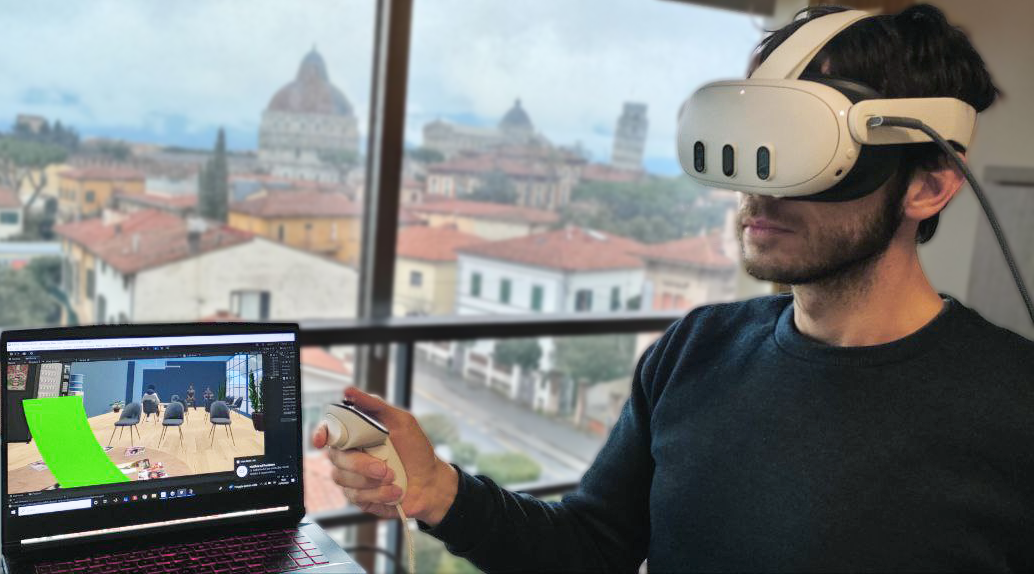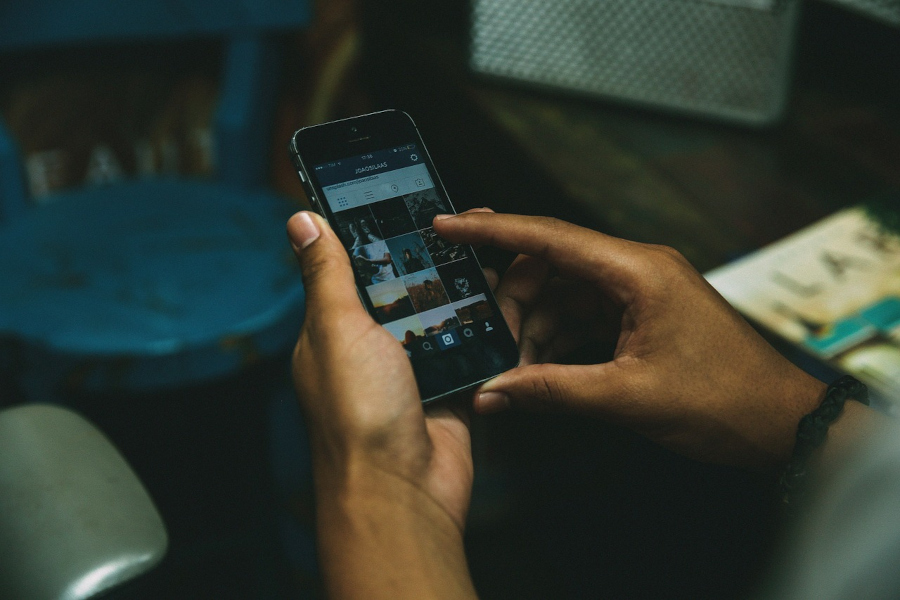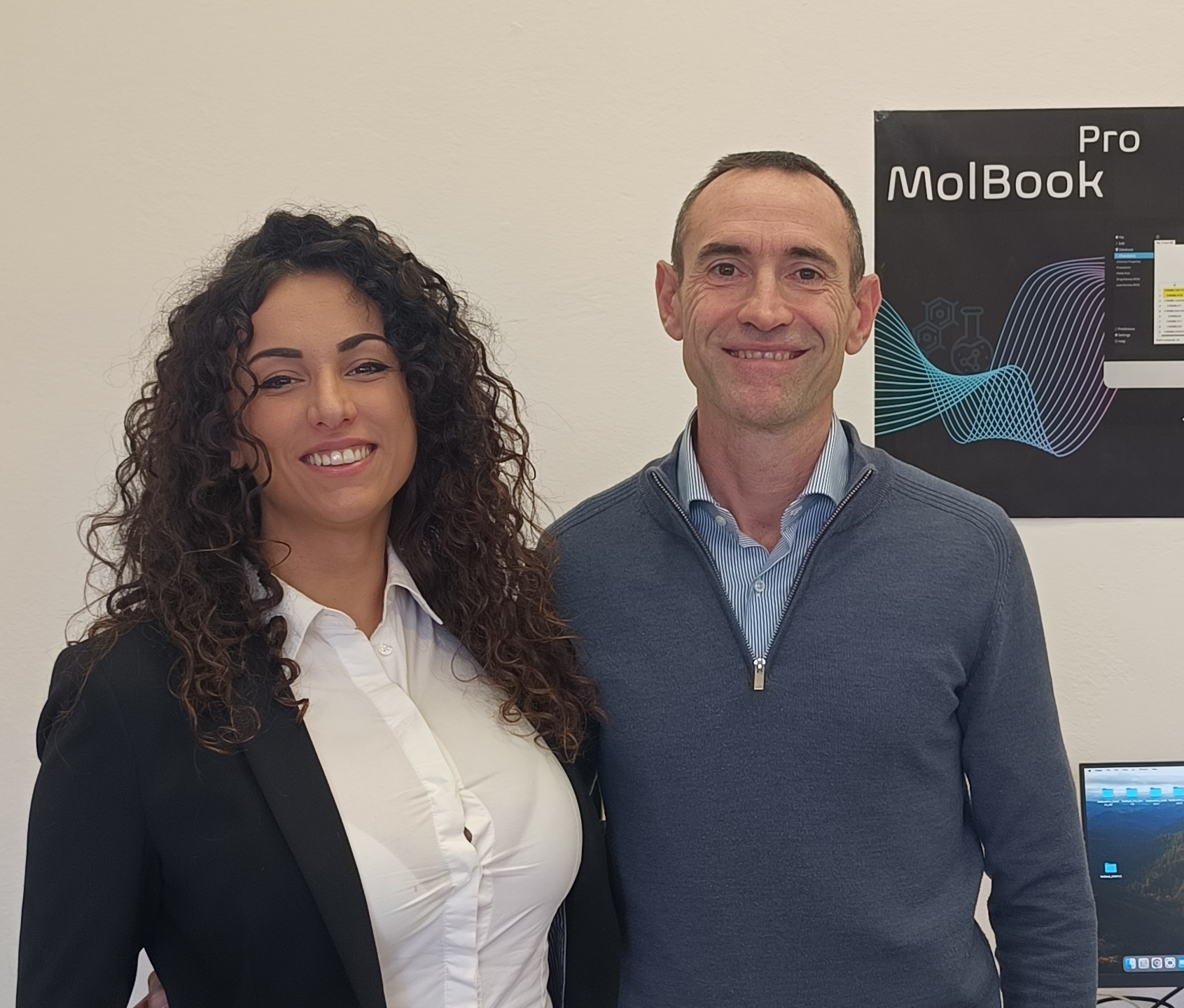3 July 2025
We wear a virtual reality headset and find ourselves immersed in an idyllic setting of forests, mountains and meadows. We are aboard a hot-air balloon. There is no preset trajectory: the balloon lifts when we are calm, and lowers slowly as tension or anxiety sets in. How is this possible?
A team of bioengineers at the Department of Information Engineering of the University of Pisa, led by Alberto Greco and Enzo Pasquale Scilingo, has designed a technological platform in which the virtual reality scenario responds to signals from the body.

“The person wearing the virtual reality headset,” explains Alberto Greco, Professor of Bioengineering at the University of Pisa, “is monitored through non-invasive sensors that collect data on heart rate and skin conductance, which we interpret as being correlated to different states of anxiety or relaxation. The virtual reality scenario we developed receives this data and adjusts the hot-air balloon’s movement accordingly. Since the goal is to make the balloon rise, the user gradually learns how to regulate their breathing, heart rate and sweating — and, in doing so, to feel less stressed and more relaxed. The study, published in Transactions on Affective Computing, shows that even just five minutes of use helps people begin to relax.”
“At the moment,” Greco continues, “we are applying the same principles to Social Anxiety Disorder, which has seen a marked increase in the aftermath of the COVID-19 pandemic, especially among young people and adolescents. For the past two years, within the framework of the BRAVE (Biofeedback-based peRsonAlised Virtual-reality Exposure therapies for anxiety disorders) PRIN (Project of Relevant National Interest), we have been working on an innovative technological platform that applies physiological signal monitoring and virtual reality to what is known in psychology as exposure therapy — that is, gradually exposing individuals to a feared stimulus or anxiety-inducing situation.”

“This type of therapy is often rejected by patients, for understandable reasons,” adds Sergio Frumento, psychophysiologist and research fellow at the Department of Information Engineering, “but the use of virtual reality that adapts to the person immersed in it improves both the acceptability and the effectiveness of the treatment. We estimated the degree of social anxiety in a group of patients using a model, and based on that we created two virtual reality scenarios: a waiting room that gradually fills with people who approach or try to interact with the user, and a scenario in which the user is asked to give a speech in a theatre before a large audience. The goal is to estimate in real time the user’s perceived anxiety levels by monitoring cardiovascular dynamics and skin conductance, in order to dynamically adapt the level of anxiety-inducing stimulation and ensure a personalised and tolerable therapy. This high level of flexibility and adaptability makes the platform suitable for both clinical and non-clinical contexts, addressing a growing social issue through an approach that also lends itself to remote telemedicine applications — for example, for the treatment of individuals affected by social withdrawal. This condition also includes the so-called hikikomori.”
“This line of research,” concludes Greco, “is part of the activities of the Department’s Centre 5.0, where we are committed to developing increasingly human-centred technologies — that is, technologies designed and created with people’s needs at their core.”
The BRAVE project, funded by the Ministry of University and Research, is coordinated by the Department of Information Engineering at the University of Pisa, and involves the Department of Surgical, Medical, Molecular and Critical Area Pathology of Pisa (specifically Danilo Menicucci), and the Department of Computer Science, Bioengineering, Robotics and Systems Engineering at the University of Genoa.



